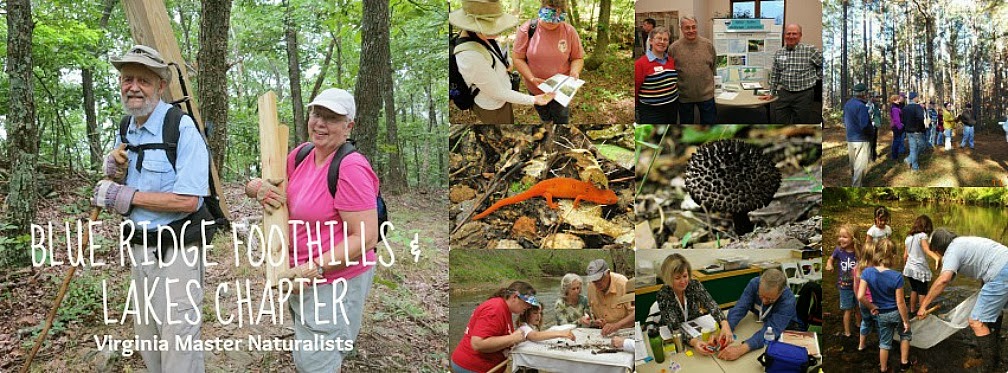

Connie Hylton is both a member of the Franklin County Retired Teachers Association and the Blue Ridge Foothills and Lakes Chapter (BRFAL) of the Virginia Master Naturalists. At our recent monthly BRFAL meeting, as usual, Connie had her thinking cap on and suggested that someone from BRFAL attend one of the Teachers Association meetings and give a brief presentation to them to explain what BRFAL and VMN is all about to spur some interest and perhaps find a new VMN candidate or two.
Now you have to know a little about how things work at our monthly BRFAL meetings. Just even think about volunteering for something and the next thing you know, you are it! Well that’s what happened to me! So before I knew it I was responsible to put together a 15-20 minute PowerPoint presentation and present it to the retired teachers.
So with some great cooperation from Michelle Prisby, Guy Buford, Jim Pilversack and Connie Hylton, I managed to take existing PowerPoint presentations and pare them down to fit into the allotted timeframe.
Well the scheduled meeting day arrived, September 12th, and I thought I was ready. I arrived at Ippy’s in Rocky Mount for the luncheon in good time only to find out that their WiFi was not working and my special wireless box would not transmit my PowerPoint slides to the nice flatscreen TV. Gulp. Retired teachers where arriving by the minute. Eureka, I was saved by an Ippys employee who showed me how to hook up the computer with an old fashioned wire.
The presentation to about 22 attentive and interested retired teachers then went off quite well with some assistance from Connie Hylton. I explained the basics of VMN and that we are a group of volunteer educators, citizen scientists and stewards helping Virginia conserve and manage natural resources and public lands and there are 30 VMN chapters around the state. We are sponsored by 5 state agencies: Virginia Cooperative Extension of Virginia Tech, Virginia Department of Conservation and Recreation, Virginia Department of Game and Inland Fisheries, Virginia Department of Forestry and the Virginia Museum of Natural History.
I described how to become a VMN by completing 40 hours of basic training and to become and maintain Certification, an additional 8 hours of advanced training and 40 hours of approved volunteer service annually. I provided a list of related websites for further research if desired.
To the best of my knowledge, no one fell asleep during the presentation and in fact several excellent questions were asked, primarily concerning invasive plants and insects. All-in-all, I think we dun good.
Rich Brager
Virginia Master Naturalist

Thanks for doing that presentation, Rich, and helping to promote the VMN program. Retired teachers seem like a great target audience!
ReplyDeleteMichelle